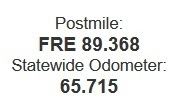Episode Gravel
All Roads Lead to Rome.
How did they do that?
Undeveloped means, there is nothing there, other than whatever nature decided to grow. On the Dirt Pile, there are trees, and shrubs, and a variety of grasses. When the rains come things turn green and some plants bloom. When the summer comes, the grasses turn golden brown. When the trees grow old , they die and fall over.
The wild animals that roam the area make pathways through the grass and around the fallen trees. Animal paths may look like they meander but they always show the direction of least effort and the shortest distance between: water, pasture, shade and shelter.
Not a road to be seen.
A road is an improved path or route that allows travel between Here and There. It's all rather complex but unless you are only traveling by foot, getting from Here to There requires a larger more defined path.
Roads come in all shapes, sizes, configurations, design, materials and complexity. Big modern highways and overpasses are the ultimate in complex road design. There are descriptions of ancient roads, details of designs and how they were paved and their expected durability, many lasting into the modern age. Modern methods aren't as durable and 21% of USA roads have deteriorated so badly they can no longer be driven on.
Ancient technology isn't so old fashioned.
A much smaller variation of road, one that is privately built, is a driveway. A driveway is the most common method of getting from Here (the public road) to There (onto the dirt pile).
It might seem that this isn't a big deal, but without a driveway you cannot get from Here to There reliably, unless you have a tractor or a tank or an earth-mover. For practical access and human design, a driveway provides The Way To There.
But you cannot wave a magic wand and shout
"EXPECTO DRIVEWAY!!!"
... because well... nothing happens. There's a bit more to it.
Things you have to do:
- Decide where the drive is going to be
- You could change your mind later and move it, but it's a lot easier if you put it where you want it in the first place.
- Check the terrain
- If you want to make things easy (read less expensive) you will find a spot that doesn't require Excavation and the dreaded Grading Permit. You have to check for drainage and runoff channels because if you don't the first big rain will wash away your efforts (and money) and possibly your down stream neighbor.
- Check the geography
- If your driveway path runs though a boulder or side of a mountain you might need to hire a tunnel boring machine. It's a lot easier if you can go around the Big Stuff.
- Check the flora
- This means trees. If your route is going to plough a path through a bunch of trees you might need a good chain saw, a hard hat and hope the tree doesn't fall on you. It's a good idea to avoid as many as you can.
Once you have the driveway planned out, you either actually do the work yourself or better yet, hire someone to do it. Hopefully, they know what they are doing because for sure, not everyone does.
- Scrape away the surface grass, weeds, shrubs
- Drag dead trees out of the way
- Remove trees and trim branches
- Install culverts and runoff channels
- Level the path
- Pack down the base
- Surface according to use
So once you can get from Here to There ...
How do you know where There is?
Well, you have to start
At The Beginning...
Somewhere, in every location on the planet, people have marked THE SPOT. From THE SPOT they measure a lot of things, one of which is distance between THE SPOT and ANOTHER SPOT.
"Over the river and through the woods..."
"Turn right at the corner store..."
"When you see the 3 trees on the left
and 2 trees on the right, go straight..."
The Romans had the "
Milliarium Aureum" also known as the Golden Milestone. From this spot they calculated all the distances in the Roman Empire. Historical reports indicated that the distances to all major cities in the Empire where listed on the monument. It was erected by the Emperor Caesar Augustus near the Temple of Saturn in the central Forum of Ancient Rome around 20 B.C. There is some debate about what was actually listed, inscribed and the location because only fragments have survived to the modern period.
In the USA, we have a Zero Milestone. It is located in Washington D.C. south of the White House. It was intended to be the starting point for all distances in the USA. Except it isn't. Only the roads in Washington D.C are measured from it.
To confuse things, there are several other Zero Milestone locations around Washington D.C. competing for the title.
Many states have their own Zero Milestones and as you can expect, these are only good until you hit the state line where the mile markers change over, except in a few states where they don't.
Some distances are measured from a one boundary edge to another edge along compass points, like from one state line to another state line.
There are also Postmile Markers that indicate distances within a county. The distances are calculated from one county line to another.
So where did you put the driveway?
Where the wild life had made a path.
 |
| Dirt Pile Driveway |
Gravel Road take me home...
 |
| Postmile |

